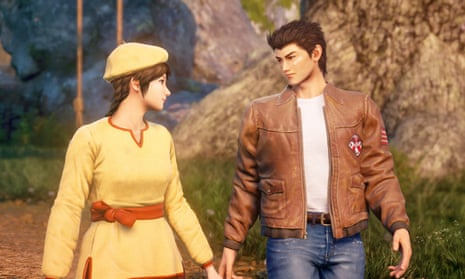On its release 15 years ago, Shenmue II was acclaimed as a masterpiece and cemented creator Yu Suzuki’s reputation as one of the games industry’s great creators. It was also a massive commercial flop, and a proposed third title was postponed indefinitely.
Over the past decade, however, the series has earned near-mythical status and, after a successful Kickstarter campaign in 2015 – the largest the platform had had for a game – Shenmue III is finally here.
Once you get over the initial shock that it actually exists, what you discover is the need for patience. The game progresses at a tectonic pace and contains elements that are firmly stuck in gaming’s past – most notably patchy animation that at times descends into clunkiness, and outbreaks of very wooden, badly delivered dialogue.
However, Shenmue III contains many aspects that transcend its shortcomings. Suzuki always said that he was trying to create a sort of everyday-life simulator, and Shenmue III achieves that aim to a near obsessive degree.

It kicks off where Shenmue II ended, with series protagonist Ryo Hazuki having hooked up with a girl called Shenhua in the tiny Chinese village of Bailu (it’s 1987, although in bucolic Bailu, it may as well be medieval times). Shenhua’s father Yuan, a stonemason, is missing, presumed abducted by a bunch of thugs who have been terrorising Bailu, so the pair embark on a quest to find him that embraces various locations and plot twists.
In tune with those life-simulator ambitions, Ryo’s health depletes if he doesn’t eat, and Shenmue III’s virtual economy figures prominently. By far the best way to make money is to collect herbs – a tranquil pursuit that proves infuriatingly compelling. Ryo can also take jobs such as chopping wood or driving a forklift, which essentially involve playing mini-games. You need money to buy expensive objects during some missions, and there are countless ways to spend cash in Shenmue III, such as playing fairground games or hanging around in arcades, where you can win objects that may be cashed in at pawnbrokers.
Then there are the capsule dispensers, which feed into the main kung fu fighting engine. You can exchange sets of the toys you find in them for otherwise pricey Skill Books, which teach Ryo new kung fu moves that he can then level-up by sparring in dojos. Specific mini-games let him improve stamina and health. It’s an oddly constructed system but it works; the fighting is fun and tactical, as you string together the moves you’ve ingrained into Ryo in the dojo, and block when necessary.
It pays to keep honing your kung fu whenever you get a spare moment, and Shenmue III’s day/night structure ensures you get plenty of opportunities. At a certain time each evening, Ryo is whisked back to his house or hotel. Often, you find that after a successful bout of detective work –punctuated by bouts of fighting, action sequences involving the franchise’s famous (and somewhat antiquated) quick time events and episodes of puzzling – you have time to fill before summarising the day’s events with Shenhua.
There are periods of grinding, especially when building up the necessary skills to take on bosses, who can only be defeated with special moves taught to you by kung fu masters who must be persuaded to share their secrets. By the time you reach the boss fights, you will have got to know every nook and cranny of your particular location, and acquainted yourself with just about everyone who lives there. Bailu, in particular, has an enticing quality of calmness and tranquillity, and whereas the Yakuza games (made by some of the original Shenmue team) major on grittiness, Shenmue III maintains a naive, Zen-like and thoroughly charming air.
If you demand constant action from your video games, it would be advisable to steer clear of this one. It is a more substantial experience, it is wilfully nostalgic, it is intended, to some extent, as a retort to the constant bustle of modern-day life. And despite the limitations of a comparatively modest budget, Suzuki has largely realised his endearing vision – part Studio Ghibli, part Karate Kid. It’s a game that suckers you into performing the most mundane tasks while somehow rendering them enjoyable.
If you played the first two games, the way Shenmue III uses modern technology to restablish the classic lore and gameplay may just bring tears to your eyes. It will certainly remind you of Suzuki’s genius. Certainly, it contains eccentricities that feel old-fashioned, but it also offers epic, immersive and calming escapism. For gamers of a certain age, it’s the ultimate nostalgia trip.

Comments (…)
Sign in or create your Guardian account to join the discussion